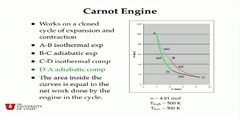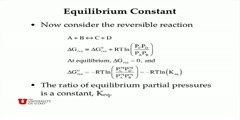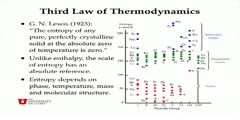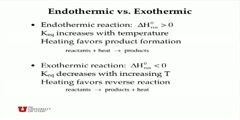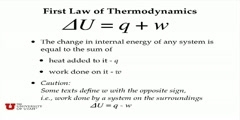Lec 31 - Preparing Single Enantiomers and Conformational Energy
"Lec 31 - Preparing Single Enantiomers and Conformational Energy" Freshman Organic Chemistry (CHEM 125) After mentioning some legal implications of chirality, the discussion of configuration concludes using esomeprazole as an example of three general methods for producing single enantiomers. Conformational isomerism is more subtle because isomers differ only by rotation about single bonds, which requires careful physico-chemical consideration of energies and their relation to equilibrium and rate constants. Conformations have their own notation and nomenclature. Curiously, the barrier to rotation about the C-C bond of ethane was established by measuring its heat capacity. 00:00 - Chapter 1. Introduction: Legal Implications of Chirality 03:36 - Chapter 2. Methods for Isolating Esomeprazole into a Single Enantiomer 15:14 - Chapter 3. Conformational Isomerism: An Introduction 31:36 - Chapter 4. Newman Projections and Nomenclature for Conformations 37:30 - Chapter 5. Understanding the Barrier to Rotate about the C-C Bond of Ethane Complete course materials are available at the Open Yale Courses website: http://open.yale.edu/courses This course was recorded in Fall 2008.
Video is embedded from external source so embedding is not available.
Video is embedded from external source so download is not available.
Channels: Chemistry (General)
Tags: chiral chromatography conformational isomer conformation entropy equilibrium constant rate heat capacity
Uploaded by: yalefreshorganic ( Send Message ) on 05-09-2012.
Duration: 48m 53s
Here is the next lecture for this course
Lec 29 - Preparing Single Enantiomers and ...
50:19 | 2673 viewsChemical Science - Free Energy of Formati ...
47:47 | 17275 viewsLec 33 - Conformational Energy and Molecu ...
47:53 | 2904 viewsLec 36 - Bond Energies, the Boltzmann Fac ...
47:51 | 3266 viewsChemical Science - Chemical Equilibrium ( ...
44:32 | 16084 viewsWhat is Entropy and Heat Engines
06:50 | 5542 viewsWhat is Entropy and Equilibrium
08:21 | 4570 viewsAll About Heat And Entropy
08:40 | 4480 viewsWhat Is Heat Capacity?
01:41 | 6028 viewsCalculating Heat Capacity and Identifying ...
02:23 | 4687 viewsLec 34 - Sharpless Oxidation Catalysts an ...
49:18 | 3316 viewsChemical Science - Chemical Equilibrium - ...
42:55 | 22236 viewsChemical Science - Bond Energies / Bond E ...
47:24 | 24585 viewsThe Chemical Equilibrium Part-2
07:52 | 4567 viewsKey Concepts of Heat and Enthalpy
08:41 | 5989 viewsNo content is added to this lecture.
This video is a part of a lecture series from of Yale
Lecture list for this course
Lec 2 - Force Laws, Lewis Structures and Resonance
Lec 3 - Double Minima, Earnshaw's Theorem and Plum-Puddings
Lec 4 - Coping with Smallness and Scanning Probe Microscopy
Lec 6 - Seeing Bonds by Electron Difference Density
Lec 7 - Quantum Mechanical Kinetic Energy
Lec 8 - One-Dimensional Wave Functions
Lec 9 - Chladni Figures and One-Electron Atoms
Lec 10 - Reality and the Orbital Approximation
Lec 11 - Orbital Correction and Plum-Pudding Molecules
Lec 12 - Overlap and Atom-Pair Bonds
Lec 13 - Overlap and Energy-Match
Lec 14 - Checking Hybridization Theory with XH_3
Lec 15 - Chemical Reactivity: SOMO, HOMO, and LUMO
Lec 16 - Recognizing Functional Groups
Lec 17 - Reaction Analogies and Carbonyl Reactivity
Lec 18 - Amide, Carboxylic Acid and Alkyl Lithium
Lec 19 - Oxygen and the Chemical Revolution (Beginning to 1789)
Lec 20 - Rise of the Atomic Theory (1790-1805)
Lec 21 - Berzelius to Liebig and Wöhler (1805-1832)
Lec 22 - Radical and Type Theories (1832-1850)
Lec 23 - Valence Theory and Constitutional Structure (1858)
Lec 24 - Determining Chemical Structure by Isomer Counting (1869)
Lec 25 - Models in 3D Space (1869-1877); Optical Isomers
Lec 26 - Van't Hoff's Tetrahedral Carbon and Chirality
Lec 27 - Communicating Molecular Structure in Diagrams and Words
Lec 28 - Stereochemical Nomenclature; Racemization and Resolution
Lec 29 - Preparing Single Enantiomers and the Mechanism of Optical Rotation
Lec 30 - Esomeprazole as an Example of Drug Testing and Usage
Lec 32 - Stereotopicity and Baeyer Strain Theory
Lec 33 - Conformational Energy and Molecular Mechanics
Lec 34 - Sharpless Oxidation Catalysts and the Conformation of Cycloalkanes
Lec 35 - Understanding Molecular Structure and Energy through Standard Bonds
Lec 36 - Bond Energies, the Boltzmann Factor and Entropy
Lec Last - Potential Energy Surfaces, Transition State Theory and Reaction Mechanism






